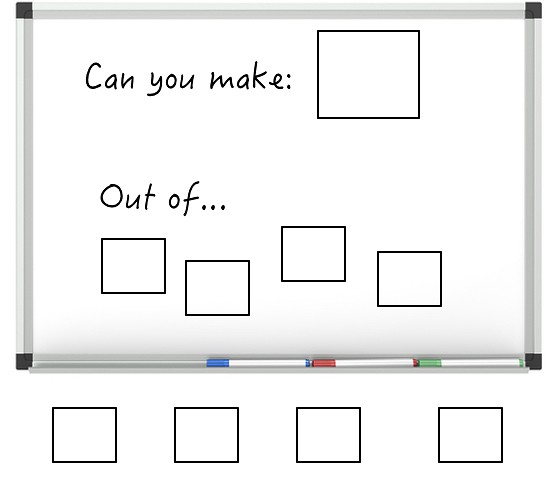Have you ever really looked at a construction site? There are so many moving parts going on to create a finished product. My own husband is a project manager in a construction company and I never fully appreciated the skills and pieces required to move a job to completion until I met him. The entire process is complex and beautiful at the same time. Today’s idea uses these same principles across a variety of content areas. I actually saw this “Can You Make It?”, an arts and math strategy in an elementary classroom and discovered that you could use it with almost anything.
Essentially, you give the final answer and ask students if they can make it with a set of variables. For instance, “can you make 45 using 4, 9, 5, 8, 6, and 7?” and the students then write equations with those numbers. This allows you to see if students truly understand how to break apart numbers and put them back together with a bunch of possibilities.
You can use this same arts and math strategy with colors, music notes, or dance steps. For example:
- Give students a shade of purple and ask students to recreate it using blue, red, cyan, magenta and white and write down the ratio of each color. Want to go more advanced? Try creating the shade digitally.
- Provide a note value like a half note or a whole note and ask students to create it using half notes, quarter notes, eighth notes, and quarter rests. After using the musical notation, have them recreate the process using the fractional counterparts (ie: how to make 1 (whole note) from 1/2, 1/4, 1/8).
- Give students the name of a dance combination such as Rumba and ask students how to create that combination with side basic step, box step, quick and slow.
DOWNLOAD THE PDF VERSION HERE
This strategy is so versatile and while it CAN be used in a single content area, it makes a very easy lever for moving between a classroom content area and a fine arts area. I hope you’ll give it a try in your next arts integration lesson!




